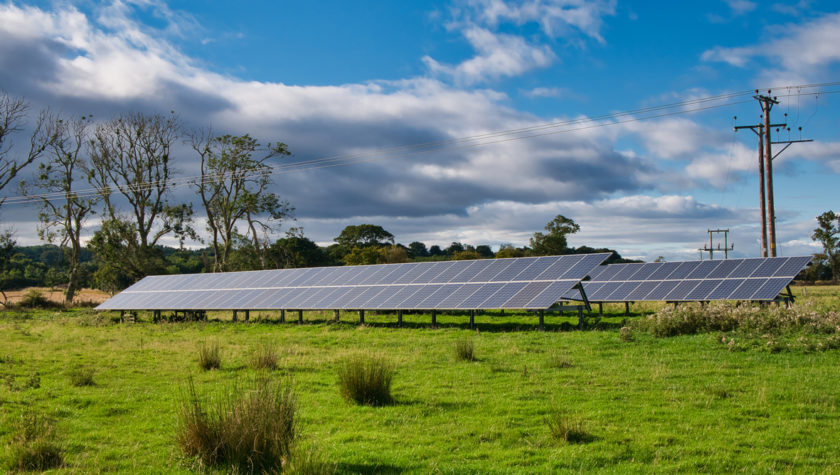Last month the Commission published its Baseline Report for the second National Infrastructure Assessment (NIA2), identifying key challenges for the coming decades that we will explore in more detail in that Assessment. I worked as lead author on the report, pulling together work from across the Commission’s team into a single narrative. Here are some of the more surprising things I learnt:
Infrastructure policy is environmental policy
Infrastructure protects people from the environment: defending against floods, transporting people quickly and safely from place to place, providing clean water, light, heating and cooling, and enabling us to communicate without leaving the house. This will all become increasingly important as the risk of extreme weather events increases.
But now infrastructure also needs to protect the environment from people. The twin challenges of climate change and biodiversity loss mean all economic infrastructure sectors need to reduce their emissions and their impact on nature.
While infrastructure might be more commonly associated with the economy and growth, there is an equally strong link with the environment. This has been reflected in the Commission’s work to date and our new objective to support climate resilience and the transition to net zero carbon emissions by 2050. The environment is a key theme throughout the Baseline Report and the challenges we have identified for NIA2.
Electrifying everything isn’t necessarily the answer
Electricity generation is one of the areas of infrastructure that has decarbonised most successfully, cutting emissions by 74 per cent since 1990. So far, we have mostly been able to cut (or plan to cut) emissions in other sectors by electrifying things – rolling out electric vehicle charging points or electrifying railway lines.
But electrification may not always be the most cost effective approach to decarbonisation. The electricity system already needs to expand significantly to cope with new sources of demand like electric vehicles, while also accelerating decarbonisation to meet government targets, and maintaining resilience of supply – no mean feat. And some major emitters, such as airplanes, HGVs and large ships, cannot easily be electrified due to the weight and size of the battery that would be needed.
In coming decades, we will increasingly need to take other approaches to decarbonisation, for example, introducing hydrogen networks to decarbonise industry, trains or HGVs, using gas or biomass with carbon capture and storage to generate electricity and developing a greenhouse gas removals sector to offset emissions in hard-to-decarbonise sectors.
NIA2 challenges: Decarbonising electricity generations; networks for hydrogen and CCS; interurban transport across modes
Decarbonising heat requires major changes to our homes, soon
Decarbonising the heating systems of the UK’s buildings is one of the biggest net zero challenges. Emissions from heating our rooms and water have only fallen by 17 per cent since 1990 and currently represent 17 per cent of total UK emissions.
While the technologies to decarbonise heat exist, the transition to low carbon heat will directly affect individuals and require significant disruption in our homes, as we change our boilers or install heat pumps and insulation. The biggest challenge will be incentivising the public to make these changes.
NIA2 challenge: Heat transition and energy efficiency
The waste sector faces important challenges that shouldn’t be ignored
The waste sector may not be the first thing that comes to mind when we think about net zero, but it actually faces some particularly important challenges. Lack of progress in this sector could impede net zero; when emissions from energy from waste plants are taken into account, emissions from waste have actually risen since 1990. The UK’s recycling rates also lag behind countries like Germany, France and the Netherlands.
Issues that need to be tackled include reducing the amount of waste going to landfill or incineration, reducing emissions from incineration, and increasing recycling rates. The government’s objective to move towards a more circular economy will also require a seismic shift towards recycling and reuse.
NIA2 challenge: Waste and the circular economy
Dense cities are good for the environment, not just the economy
Often, we imagine an eco-friendly lifestyle as one where we live ‘off the grid’ and ‘get back to nature’ – a cabin in the woods with a solar panel and a vegetable patch perhaps. But one of the best ways to reduce your environmental impact is actually to live in a city.
Dense cities group people together and reduce humans’ encroachment on natural habitats. Tightly packed flats and houses are more energy efficient to heat, and it is easier to travel by mass transit, bike or on foot. In 2017, 12 of the 20 local authorities with the lowest CO2 emissions per person were London boroughs.
This means it is ever more important to make sure our cities are good places to live. Larger cities tend to have worse congestion and poorer connectivity. Alleviating congestion completely should not be the objective; it is a sign of a successful city and journeys themselves, if made using low carbon transport, are not necessarily a problem. But, at a certain point, slow and overcrowded transport networks will put people off coming to cities to live or work. Creating additional capacity will enable more people to live in our densest – and most environmentally friendly – cities.
NIA2 challenge: Urban mobility and congestion
Over the next 18 months, the Commission will be exploring each of these challenges in more detail ahead of NIA2. We are currently running a Call for Evidence to help inform our work, and interested organisations are invited to take part – our deadline for submissions is 4 February 2022. More details can be found here.
Catherine Jones is a senior policy adviser in the Commission’s policy team.




